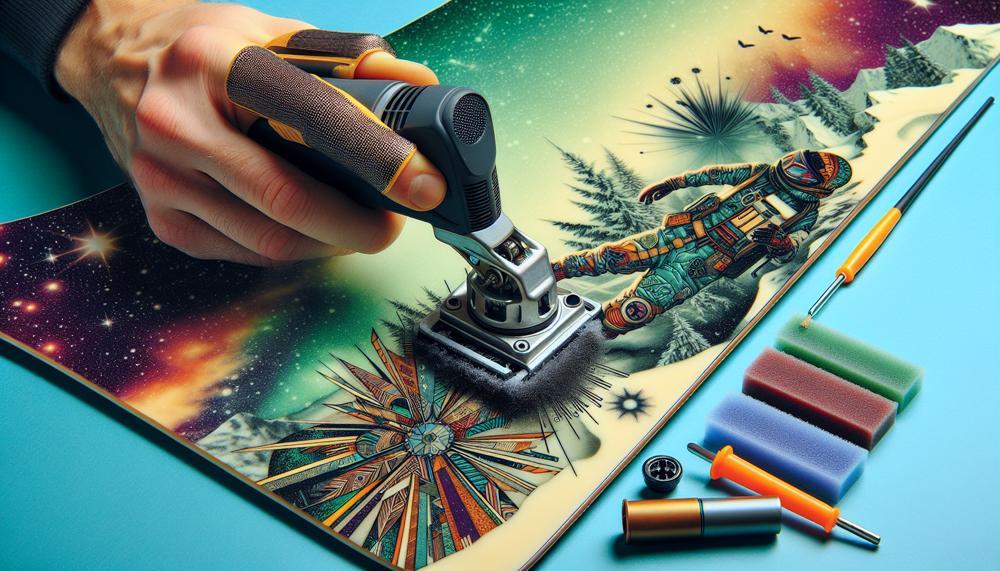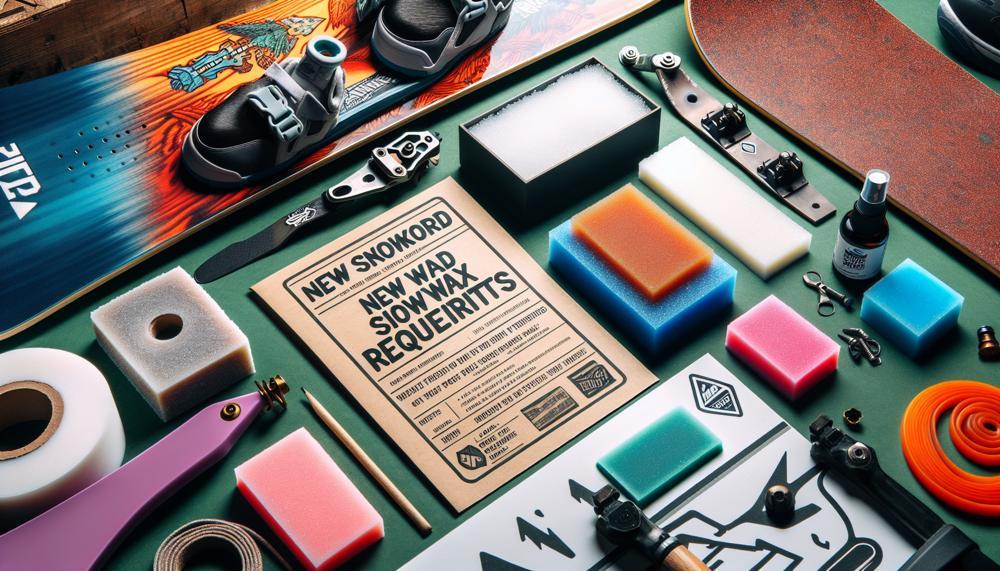Are you itching to shred the fresh powder on your brand new snowboard? Before you hit the slopes, take a moment to show your board some love and care.
One crucial step in this process is waxing your snowboard. Not only does it improve performance, but it also protects your board from damage caused by friction.
In this blog post, we’ll dive into the world of waxing and cover everything you need to know about this essential maintenance task for your snowboard.
So, do you need to wax a new snowboard?
No, you don’t need to wax a new snowboard before riding it. New snowboards come with a factory wax that protects the board from drying out or getting damaged. However, this factory wax is different from a traditional snowboard wax application and is not even traditional hot wax. Some say that you can ride on a factory wax for a few days, depending on snow conditions. Others recommend waxing new boards, especially if you get one in the off season. Wax helps to prolong the lifespan of your board, and it also enhances your speed and performance while on the slopes.
Why You Don’t Need to Wax a New Snowboard
Contents
When purchasing a new snowboard, you may assume that the factory wax is enough for optimal performance and protection on the mountain.
However, this is not the case. While the minimal factory wax may provide some initial glide, it quickly wears off, leaving the base vulnerable to damage.
Therefore, it is highly recommended to wax a new snowboard before taking it out on the slopes.
| Reasons | Explanation | Benefits |
| The factory wax is minimal | The minimal factory wax may provide some initial glide but wears off quickly. | – Provides some initial glide Protects the base from damage |
| Personal wax preferences | If you have particular wax preferences, it is necessary to wax a new snowboard. | – Customized performance Better control on the mountain |
| Regular waxing is essential for optimal performance and protection | The basic wax applied by manufacturers is not enough for optimal performance and protection. | – Better performance on the slopes
|
Firstly, it’s essential to note that while the factory always waxes their products before selling them, their minimal wax coating is insufficient for optimal performance and protection on the mountain. This initial layer may provide some glide, but it quickly wears off, leaving your snowboard susceptible to damage. Hence, it’s crucial to wax a new snowboard before taking it out on your first ride.
Another factor to consider when deciding whether or not to wax a new snowboard is your personal wax preferences. Suppose you have specific temperature or product preferences. In that case, it’s recommended to wax a new board according to your preferences. This will provide customized performance and better control on the mountain, enhancing your overall riding experience.
Moreover, regular waxing with different types of wax is essential for optimal performance and protection on the mountain. The basic wax applied by manufacturers is not enough to maintain the performance and longevity of a snowboard. Regularly waxing your board will help break in the base and provide better control on the slopes. It also protects the base from damage, ensuring your snowboard lasts for many seasons to come.
Why You Need to Wax a New Snowboard
Waxing a new snowboard is vital because it not only enhances its performance, but also safeguards the base from potential damage.
The following table highlights the key benefits of waxing a new snowboard:
| The Importance of Waxing a New Snowboard | Explanation |
| Boosts performance | A properly waxed snowboard glides smoothly and quickly over the snow, making it easier to maneuver and control. |
| Shields base from harm | Wax acts as a protective layer, preventing any scratches or dents on the base of the snowboard. |
| Extends board’s lifespan | Regular waxing helps prevent the base from drying out and cracking, ultimately prolonging the life of the snowboard. |
| Prevents decreased speed and control | Neglecting to wax a new snowboard can result in decreased speed, maneuverability, and control on the mountain. |
| Can cause damage without proper waxing | Riding without wax or with insufficient wax can lead to damage on both the base and edges of the snowboard. |
| Personalize for individual preference | The type of wax used (fluorinated, all-temperature, or natural) depends on personal preference and specific needs. |
| Easily done at home or by professionals | Waxing can be done at home with a DIY kit or taken to a professional tuning shop for expert services. |
Additional Considerations
Every snowboarder has their own preference when it comes to waxing their board. Some prefer a fresh coat of wax every time they hit the mountain, while others are satisfied with the factory wax.
It is important to take into account personal preference and desired level of performance when deciding how often to wax a new snowboard.
Budget:
Waxing a snowboard can be done at home with minimal cost, but for those seeking top-level performance, professional tuning services are also available.
It is important to consider budget constraints when deciding on the frequency and type of wax used for a new snowboard.
Experience Level:
For beginners, the difference in performance between a freshly waxed board and one that hasn’t been waxed in a while may not be noticeable.
However, more experienced riders can feel even the slightest changes in speed and control, making regular waxing essential for their enjoyment on the mountain.
Frequency of Use:
The more frequently a snowboard is used, the more often it should be waxed. This is especially true for those who ride in wet or icy conditions, as moisture can strip away the wax and leave the base dry and susceptible to damage.
Type of Wax:
Different types of wax offer different benefits, such as maximum speed, versatility, or eco-friendliness.
When choosing the type of wax to use on a new snowboard, it is important to consider personal preferences and riding style.

Professional Services:
For those seeking top-level performance in demanding environments, professional tuning services may be necessary.
These services include not only waxing, but also base repairs and edge sharpening to keep the board in optimal condition.
Also Read: Can A Snowmobile Go On Sand?
Conclusion
In conclusion, it is undeniable that waxing a new snowboard is crucial for maintaining its performance and protecting it from potential damage. Just like treating yourself to a spa day, waxing rejuvenates and nourishes the base of your board, resulting in a smoother ride down the mountain.
Not only does it improve speed and control, but it also extends the lifespan of your board.
To properly wax a new snowboard, make sure you have all the necessary tools and follow the step-by-step guide provided in this article. Regularly waxing your board every 3-5 days of riding or when you notice decreased performance is essential for optimal results.
While personal preferences, budget constraints, experience level, frequency of use, and type of wax may vary among individuals, one thing remains certain – regular maintenance and waxing are necessary for peak performance on the mountain.
Whether you choose to do it yourself or seek professional services, showing your snowboard some love through regular waxing will undoubtedly enhance your shredding experience.
So, before hitting the slopes with your brand new board, take a moment to give it some TLC with a fresh coat of wax – your snowboard will thank you for it.






